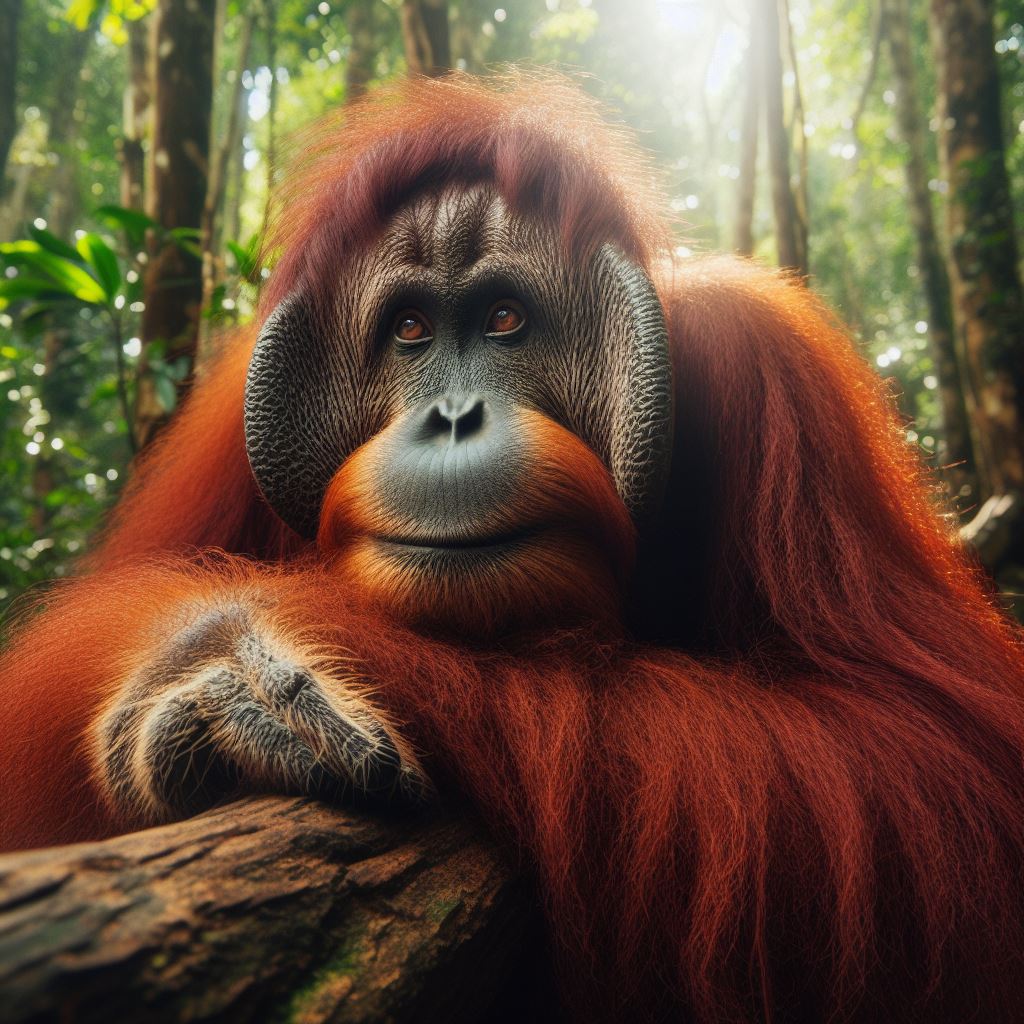Although certain animal self-medication behaviours have been reported, it is currently unknown that animals use healing herbs to cure wounds. Researchers from Universitas Nasional in Indonesia and the Max Planck Institute of Animal Behaviour in Germany have now seen this in a male Sumatran orangutan who had a face wound. He consumed the sap of a climbing plant, which has anti-inflammatory and pain-relieving qualities and is often used in traditional medicine, and applied it frequently. Additionally, he wrapped the green plant mesh around the entire incision. Therefore, it’s possible that humans and orangutans shared a similar progenitor that gave birth to medical wound care.
Animals that are not human can frequently be seen exhibiting avoidance and ill behaviour, but they also frequently engage in self-medication by ingesting particular plant components. The great apes, who are the closest living ancestors of humans, are known to apply plant material topically to relieve painful muscles and to consume certain plants to cure parasite infections. A group of chimpanzees in Gabon was recently seen bandaging wounds with insects. The effectiveness of this behaviour is yet unclear, though. there is currently no evidence of the use of a biologically active chemical for wound therapy.
A study conducted by cognitive and evolutionary scientists from Universitas Nasional, Indonesia, and the Max Planck Institute of Animal Behaviour, Konstanz, Germany, shows that a wild male Sumatran orangutan actively treats wounds using a therapeutic herb. The research, conducted at the Suaq Balimbing research site in Indonesia, which is a protected rainforest region home to about 150 critically endangered Sumatran orangutans, was headed by Caroline Schuppli and Isabelle Laumer.
During daily observations of the orangutans, we noticed that a male named Rakus had sustained a facial wound, most likely during a fight with a neighboring male.
Isabelle Laumer from the Max Planck Institute of Animal Behavior, first author of the study.
Three days following the incident, Rakus chewed on the leaves of a liana known as Akar Kuning (Fibraurea tinctoria), pulled them off deliberately, and then meticulously applied the liquid for several minutes to the face wound. Finally, he used all of the chewed leaves to cover the wound.
This and related liana species that can be found in tropical forests of Southeast Asia are known for their analgesic and antipyretic effects and are used in traditional medicine to treat various diseases, such as malaria. Analyses of plant chemical compounds show the presence of furanoditerpenoids and protoberberine alkaloids, which are known to have antibacterial, anti-inflammatory, anti-fungal, antioxidant, and other biological activities of relevance to wound healing.
Isabelle Laumer
The incision was healed after five days, and observations throughout the next several days did not reveal any indications of an infection. It’s interesting to note that Rakus rested longer than normal after becoming hurt. She argues that sleep promotes wound healing because it increases growth hormone release, protein synthesis, and cell division.
The situation described in this paper raises concerns regarding the intentionality and emergence of self-medication behaviours in non-human animals, as it does with other such behaviours.
The behavior of Rakus appeared to be intentional as he selectively treated his facial wound on his right flange, and no other body parts, with the plant juice. The behavior was also repeated several times, not only with the plant juice but also later with more solid plant material until the wound was fully covered. The entire process took a considerable amount of time.
Isabelle Laumer
It is possible, that wound treatment with Fibraurea tinctoria by the orangutans at Suaq emerges through individual innovation,” says Caroline Schuppli, senior author of the study.
Orangutans at the site rarely eat the plant. However, individuals may accidentally touch their wounds while feeding on this plant and thus unintentionally apply the plant’s juice to their wounds. As Fibraurea tinctoria has potent analgesic effects, individuals may feel an immediate pain release, causing them to repeat the behavior several times.
Caroline Schuppli
Since the behaviour has never been documented previously, it’s possible that the Suaq orangutan population’s behavioural repertoire does not currently include Fibraurea tinctoria wound care. Rakus’s origins are unclear, and he was not born in Suaq like all the adult males in the area.
Also Read| Advanced heart regenerative therapy using stem cell-derived heart muscle cells
Orangutan males disperse from their natal area during or after puberty over long distances to either establish a new home range in another area or are moving between other’s home ranges,
Therefore, it is possible that the behavior is shown by more individuals in his natal population outside the Suaq research area.
Caroline Schuppli
This potentially novel behaviour offers fresh information on the evolutionary history of wound medicine in general as well as the occurrence of self-medication in our closest ancestors. It also reports the first case of active wound care using a biological active substance in a great ape species.
Also Read| Progression of amyotrophic lateral sclerosis (ALS) can be slowed down by a new gene therapy
The treatment of human wounds was most likely first mentioned in a medical manuscript that dates back to 2200 BC, which included cleaning, plastering, and bandaging of wounds with certain wound care substances,
As forms of active wound treatment are not just human, but can also be found in both African and Asian great apes, it is possible that there exists a common underlying mechanism for the recognition and application of substances with medical or functional properties to wounds and that our last common ancestor already showed similar forms of ointment behavior.
Caroline Schuppli
Source: Max-Planck-Gesellschaft News
Journal Reference: Laumer, Isabelle B., et al. “Active Self-treatment of a Facial Wound with a Biologically Active Plant by a Male Sumatran Orangutan.” Scientific Reports, vol. 14, no. 1, 2024, pp. 1-7, https://doi.org/10.1038/s41598-024-58988-7.
Last Modified:
Graduated from the University of Kerala with B.Sc. Botany and Biotechnology. M.Sc. Biotechnology from the University of Kerala. Attended certificate course in Artificial Intelligence for Everyone from Deeplearning.AI, Influenza Prevention and Control from World Health Organization. Attended workshops related to Bioinformatics at the University of Kerala. 3 years of experience in website management. Experience in WordPress, Blogger, Google Analytics, and Google Search Console.







